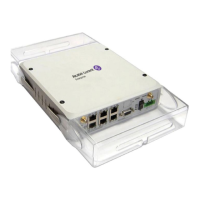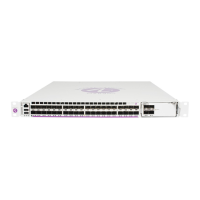IES for In-band Management
Page 332 7705 SAR OS Services Guide
The high-priority and low-priority queues are limited to 1 Mb/s and the FTP queue is rate-
limited to 3 Mb/s ingress to the fabric toward the control plane.
Troubleshooting and Fault Detection Services
The IES in-band management service supports ATM OAM F4 (VP level) and F5 (VC level)
cell generation and termination. For more information on OAM, refer to the 7705 SAR OS
OAM and Diagnostics Guide, “OAM and SAA”.
Bidirectional forwarding detection (BFD) can also be configured on the IES interface. BFD
is a simple protocol for detecting failures in a network. BFD uses a “hello” mechanism that
sends control messages periodically to the far end and receives periodic control messages
from the far end. BFD is implemented for static routes in asynchronous mode only, meaning
that neither end responds to control messages; rather, the messages are sent in the time
period configured at each end.
To support redundancy, ECMP must be enabled to allow duplicate routes in the routing
table, and BFD must be enabled to trigger the handoff to the other route in case of failure.
Due to the lightweight nature of BFD, it can detect failures faster than other detection
protocols, making it ideal for use in applications such as mobile transport.
If the configured number of consecutive missed BFD messages is reached, the static route to
the peer is declared not active.
Note: Proper configuration of the traffic descriptor profiles is essential for proper operation of
the IES SAP. If no profile is assigned, the default UBR service category is assumed. All IES
7705 SAR traffic is scheduled; no shaping is supported in this mode. To ensure that IP traffic
transported over the IES SAP is prioritized fairly, ATM layer traffic descriptors should be
assigned. See
IES Management SAP Commands on page 364 in the IES Command
Reference
section for information.
Note: Layer 2 AIS/RDI cells that are received on the IES SAP will disable the IP interface.
Link failures detected by BFD will also disable the IP interface.

